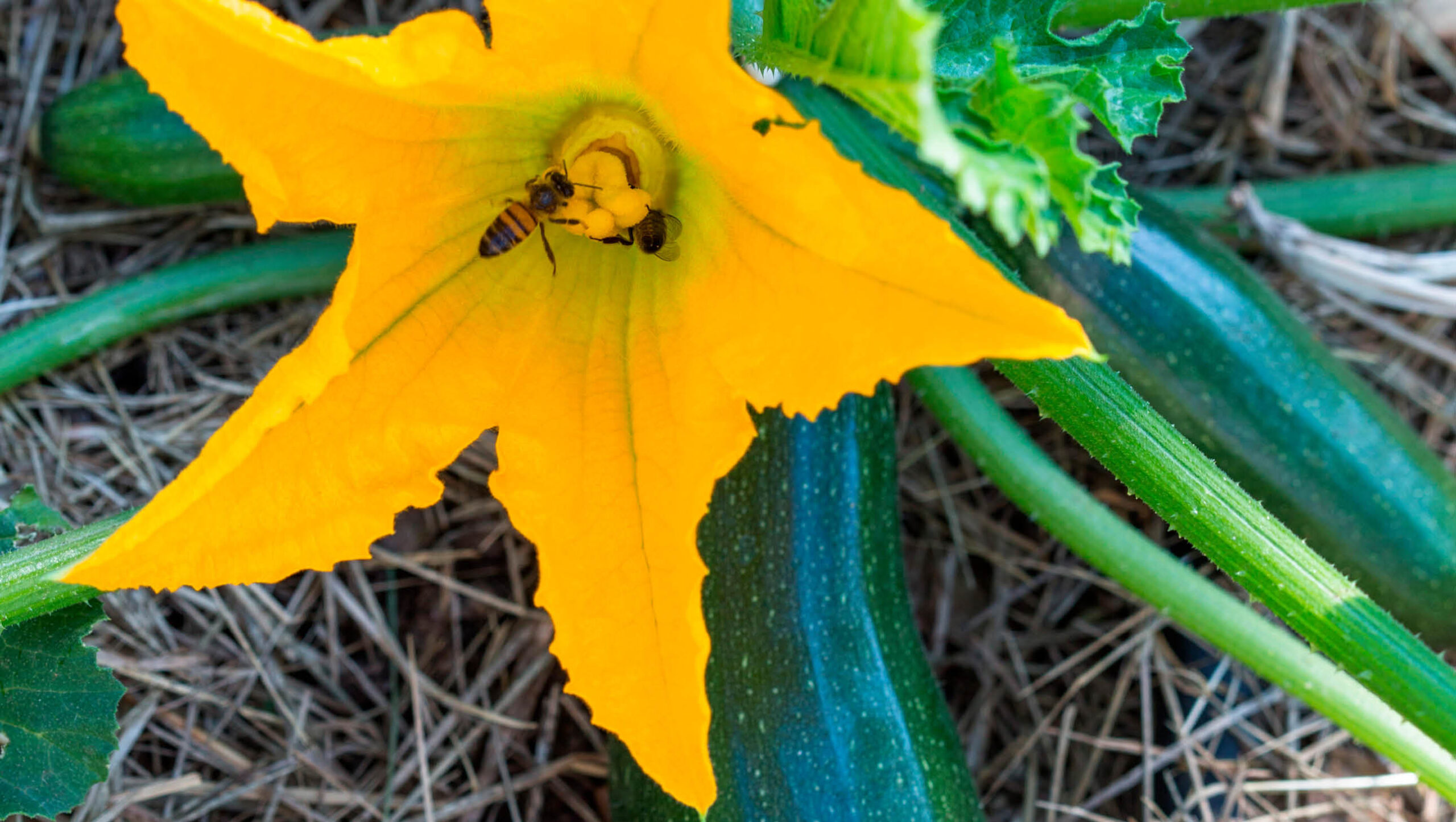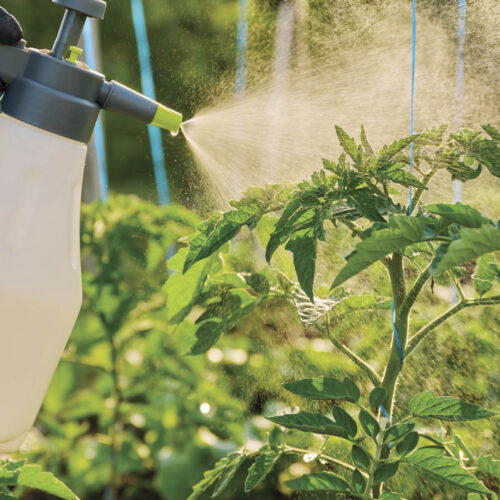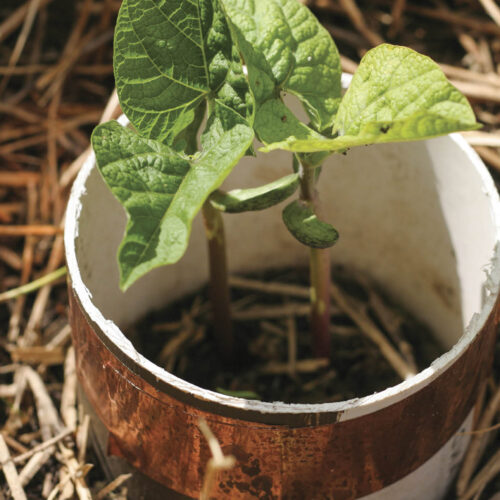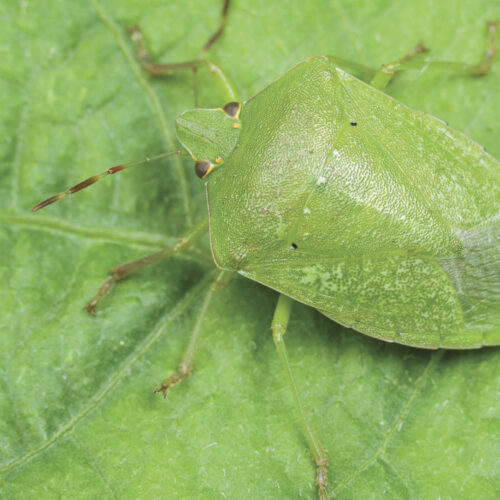How good bugs work in an organic garden
2022-07-04T05:59:24+10:00
A well-balanced garden replicates a wild environment filled with beneficial insects that can help keep pests under control.
We can never impress enough how integral beneficial insects are to an organic garden. In a wild environment, predators and pests generally live in balance, and as long as the balance is maintained, not too much damage is done. This is what we try to replicate in our gardens by providing diverse foliage, places for birds to nest and water and food sources.
Predators, parasites and pollinators
Insects that benefit the garden generally fall into three categories: predators, parasites and pollinators. Some, such as the green lacewing, fall into more than one category (see below). It is important that you can recognise pests and predators so that, for example, if you decide to spray your aphids (organically), you are not also inadvertently killing ladybird or lacewing larvae that are feeding on them.
Typical predatory insects include praying mantids, ladybird beetles, native earwigs, dragonflies, lacewings and paper wasps. Sometimes it is the adult that feeds on the pest, sometimes it’s the larvae.
Parasitic insects live on or in their host, generally not killing the host until the parasite has reached the adult stage of their life cycle. They are usually specific to a particular pest and include flies, wasps or nematodes (although nematodes are not insects).
Pollinators are those insects that are essential for good fruit and vegetable production. Honeybees, native bees (leaf-cutting, blue-banded and more; there are more than 1000 species of native bees in Australia), lacewings, wasps, flies, moths and butterflies
are all pollinators. It is estimated that one-third of our total diet is dependent, directly or indirectly, upon insect-pollinated plants while 80 per cent of flowers require insects for pollination.
Bug-attracting plants
Many beneficial insects will be lured into your garden if you plant a variety of flowers and flowering shrubs and trees for them to feed on. They will be attracted by the nectar in the flowers, and often their larvae will then feed on your pests.
Other beneficial predatory and parasitic insects will be attracted by the nectar-feeding insects or pests that may have arrived to feed on your crops. It’s a bug-eat-bug world in an organic garden!
Green lacewing
Chrysopa species and Mallada species
These wonderful insects are both predator and pollinator. The adult is about 2cm long with four delicate wings. They feed on pollen and nectar, and lay their eggs on slender silken stalks on leaves and small branches. Four days later the larvae hatch out.
These ferocious little beasts grow to only 1cm long just before they pupate, but have large- toothed, forward-protruding jaws for catching prey, and spikes on their backs on which they impale dead prey and other bits of rubbish. This acts as camouflage so that they resemble tiny, walking rubbish piles.
The lacewing life cycle is only about 50 days. The eggs hatch after four days, the larvae go through thee moults over 12 days before pupating, which lasts about nine days. Once the adults appear, they live for only about three weeks, with females laying as many as 600 eggs.
Lacewing larvae feed on and control aphids, scale, mealybugs, moth eggs, whitefly and some mites. If you don’t already have them in your garden it is possible to purchase them as eggs and release them into your patch. See goodbugs.org.au for suppliers.
Plants to grow
Here’s a list of beneficial insect-attracting plants grown by Jerry Coleby-Williams:
Edible crops
Bok Choi, Brassica rapa var. chinensis
Broccoli raab (aka flowering turnip) Brassica rapa var. rapa ‘Cima di Rapa Quarantina’
Chervil, Anthriscus cerefolius
Chinese cabbage, Brassica rapa var. chinensis
Chinese cabbage, Brassica rapa var. pekinensis
Chinese celery, aka smallage, Apium graveolens
Chinese spinach, Amaranthus cruentus
Chinese spinach, Amaranthus tricolor
Chinese spinach, Amaranthus tricolor ‘Flying Colours’, ‘Flaming Fountains’, ‘Joseph’s Coat’
Chives, Allium schoenoprasum
Choko, Sechium edule
Coriander, Coriandrum sativum
Dai Gai Choi, Brassica juncea var. foliosa
Dill, Anethum graveolens
Dwarf Greek basil, Ocimum minimum
Endive, Cichorium endivia
Ethiopian cabbage, Brassica carinata ‘Old Women Meet and Gossip’
Finger lime, Citrus australis
French marigold, Tagetes patula ‘Himalayan’
Green amaranth, Amaranthus viridis
Japanese parsley, Cryptotaenia japonica
Kale, Tuscan, Brassica oleracea Acephala Group
Kohl rabi, Brassica acephala Gongyloides group
Lettuce, Lactuca sativa
Love-lies-bleeding, Amaranthus caudatus
Mizuna, red-leaved, Brassica juncea var. japonica
Mouse melon, Melothria scabra
Mustard, Brassica juncea
Parsley, flat-leaved, Petroselenium ‘Giant of Italy’
Phillip Island hibiscus, Hibiscus insularis
Pigeon pea, Cajanus cajan
Podding radish, Raphanus caudatus
Pumpkin, Cucurbita moschata
Radicchio, Cichorium intybus
Radish, Raphanus sativus
Sacred basil, Ocimum tenuiflorum
Sweet basil, Ocimum basilicum
Tatsoi, Brassica narinosus
West Indian gherkin, Cucumis anguria
Wild rocket, Diplotaxis tenuifolia
Winter melon, Benincasa hispida
Predator attracting ornamentals
Andean Silver-leaf Sage, Salvia discolor
Brahmi, Bacopa monnieri (blue-flowered only)
Clustered mountain mint, Pycnanthemum muticum
Euphorbia caerulescens
Euphorbia cyathophora
Euphorbia graminea
Euphorbia griseola
Euphorbia splendens var. splendens
Kalanchoe orgyalis
Rondeletia amoena
Sansevieria suffruticosa subsp. longituba
Stapelia gigantea
Stapelia leendertziae
This is just one of the many articles filled with practical organic solutions in our Essential Guide: Urban Farming, which is available in digital format for easy reference.







